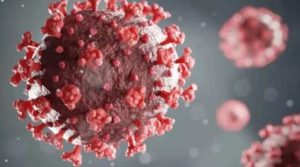
COVID-19 cases have seen a spike in the past few days in different countries across the globe. Cases in China have surged with a new sub-variant JN.1 spreading in China, US and Singapore.
However, the cases of this new variant might not be entirely new as small numbers of JN.1 cases have been detected in many countries in the past few months.
The sub-variant JN.1 is similar to the BA.2.86 variant which is also known as Pirola. However, the JN.1 version has one additional mutation in the spike protein compared to Pirola. The Pirola variant was a “variant of interest” for scientists because it has more than 39 mutations it carried on the spike protein. The spike protein is important because it is the spike protein that sticks to the receptors on human cells which eventually allows the virus to enter it.
Earlier, there were concerns that Pirola might evade immunity and spread quickly. However, according to the Centres for Disease Control and Prevention (CDC), the updated vaccines available in the country have demonstrated the ability to effectively block Pirola infections and should, therefore, protect against JN.1 as well.
A report on the Indian Express said that the World Health Organization (WHO) said that Pirola and its descendants accounted for 17 per cent of the Sars-CoV-2 sequences uploaded to the global database GISAID. More than half of these sequences were that of JN.1 by the beginning of December. There were at least 3,000 sequences of JN.1 uploaded to the global database, with most of the sequences coming from US, Canada and European countries. “While new variants like BA.2.86 and JN.1 attract attention, right now, 99 per cent of SARS-CoV-2 variants are part of the XBB group,” the US CDC said.
How to keep yourself protected?
Wear a mask that covers your mouth and nose when you are in public or in crowded spaces. Stay at least 6 feet or about two arms’ length away from others. Wash your hands often with soap and water for at least 20 seconds, especially after you have been in a public place, or after blowing your nose, coughing, or sneezing. Use hand sanitiser as and when required. Try not to touch your face.
According to the CDC, prevalent symptoms of COVID-19 include fever or chills, cough, difficulty breathing or shortness of breath, fatigue, muscle or body aches, headache, new onset of taste or smell loss, sore throat, congestion or runny nose, nausea or vomiting and diarrhoea. You might start to see these symptoms somewhere between 2 to 14 days after contracting the virus.




 Driving Naari Programme launched in Chandigarh
Driving Naari Programme launched in Chandigarh






























